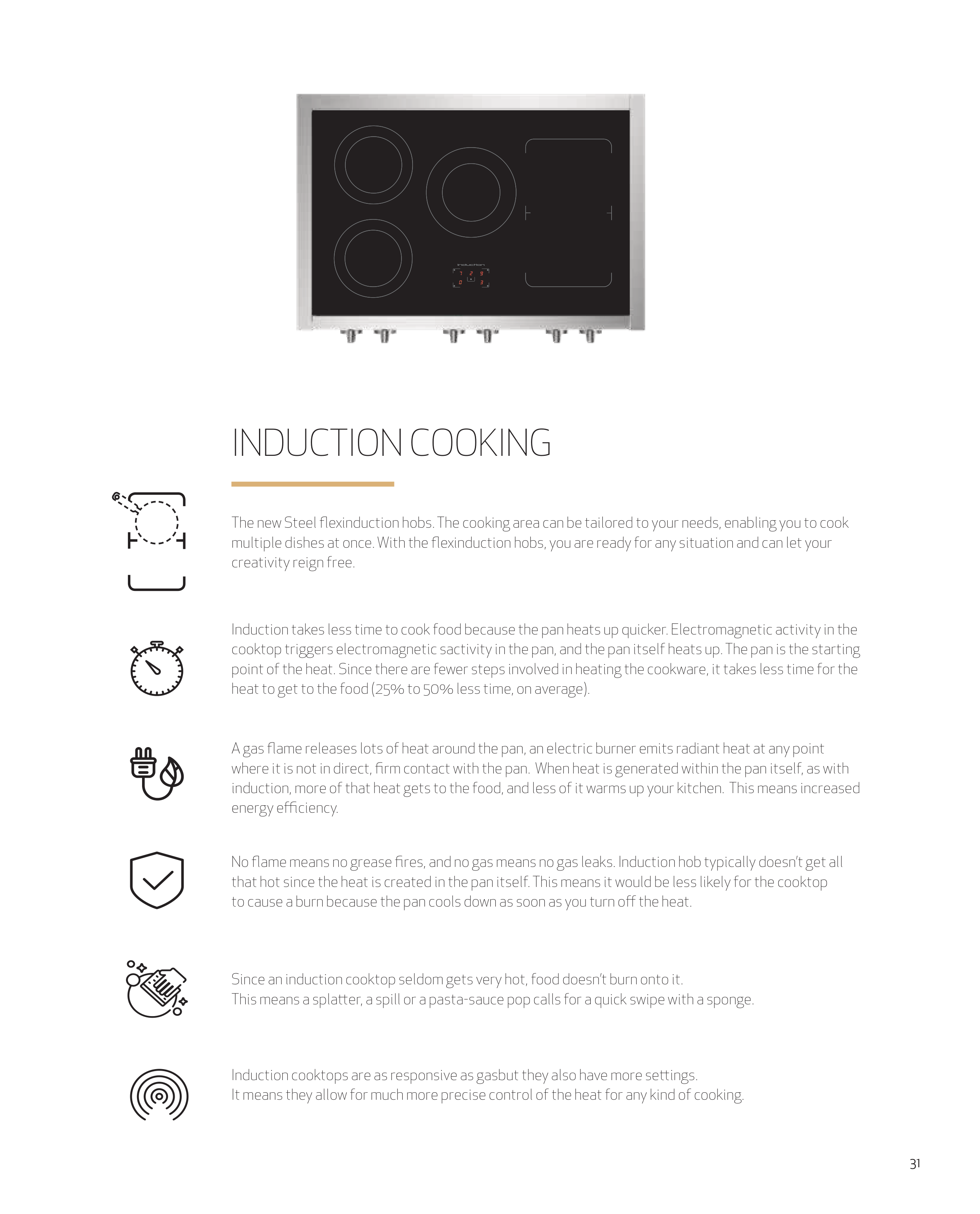INDUCTION COOKING
Induction takes less time to cook food because the pan heats up quicker. Electromagnetic activity in the
cooktop triggers electromagnetic sactivity in the pan, and the pan itself heats up. The pan is the starting
point of the heat. Since there are fewer steps involved in heating the cookware, it takes less time for the
heat to get to the food (25% to 50% less time, on average).
The new Steel flexinduction hobs. The cooking area can be tailored to your needs, enabling you to cook
multiple dishes at once. With the flexinduction hobs, you are ready for any situation and can let your
creativity reign free.
A gas flame releases lots of heat around the pan, an electric burner emits radiant heat at any point
where it is not in direct, firm contact with the pan. When heat is generated within the pan itself, as with
induction, more of that heat gets to the food, and less of it warms up your kitchen. This means increased
energy efficiency.
No flame means no grease fires, and no gas means no gas leaks. Induction hob typically doesn’t get all
that hot since the heat is created in the pan itself. This means it would be less likely for the cooktop
to cause a burn because the pan cools down as soon as you turn off the heat.
Since an induction cooktop seldom gets very hot, food doesn’t burn onto it.
This means a splatter, a spill or a pasta-sauce pop calls for a quick swipe with a sponge.
Induction cooktops are as responsive as gasbut they also have more settings.
It means they allow for much more precise control of the heat for any kind of cooking.
31


